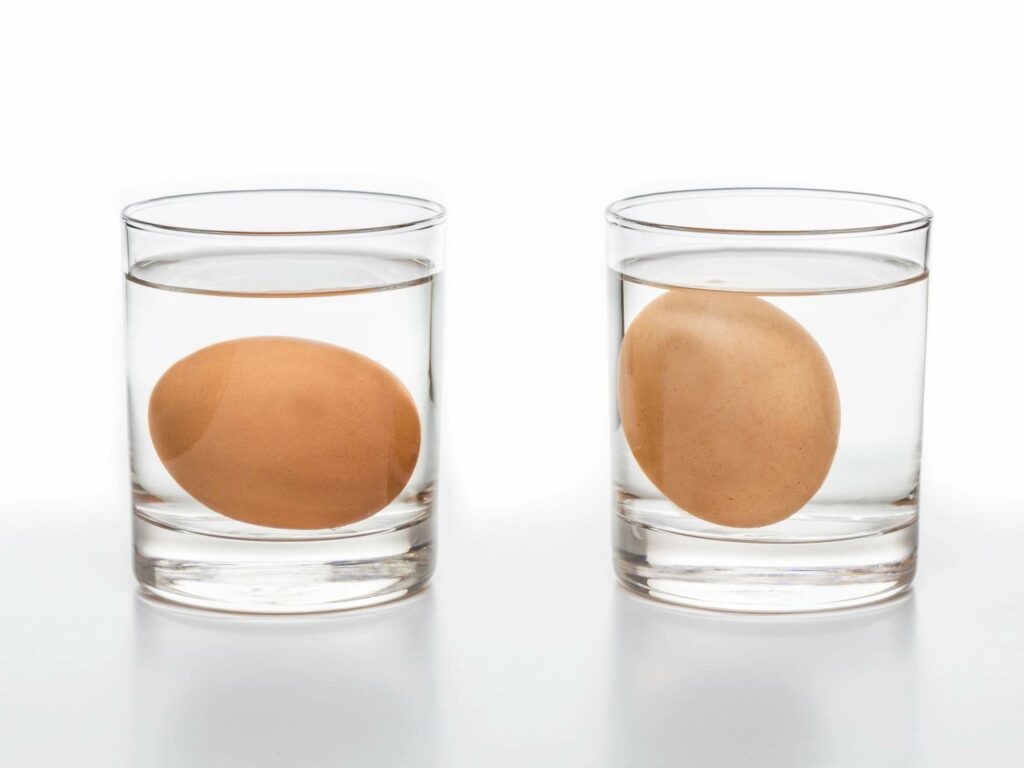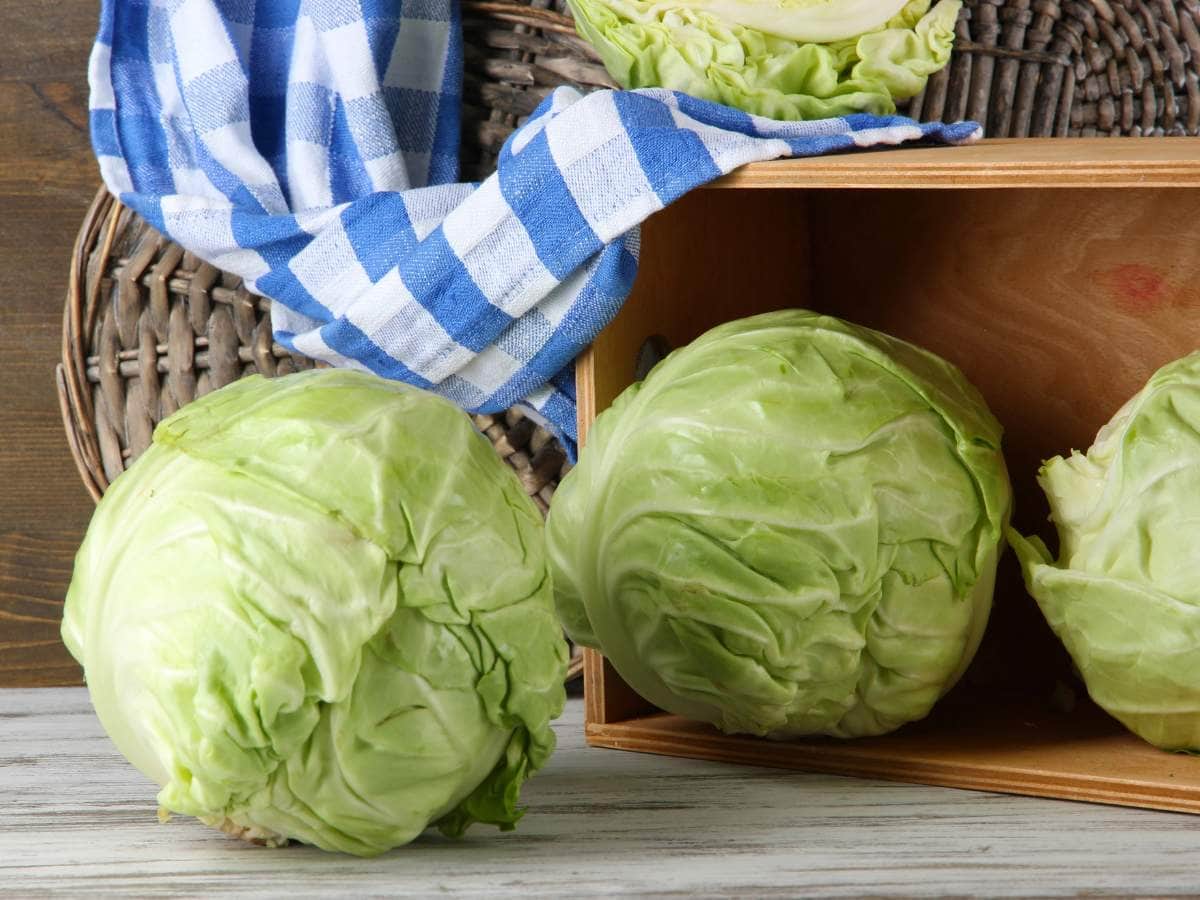Fresh or Foul? How to Tell if An Egg Is Rotten
Primal Edge Health participates in the Amazon Services LLC Associates Program and other affiliate programs and therefore, may collect a share of sales or other compensation from the links on this page. This comes at no additional cost to you, and all the prices and availability are accurate at the time of publishing.
Rotten eggs can be a real problem, especially when you’re making a huge batch of ground beef egg rolls or something you won’t taste until later like pickled eggs. They can make your dish taste and smell awful, and they can even make you sick.

But how can you tell if an egg is rotten before you crack it open? Learn some of the telltale signs of a rotten egg so you can avoid them in the future.
One of the easiest ways to spot a rotten egg is by its smell. Rotten eggs have a distinct, sulfurous odor that’s hard to miss. If you notice this smell when you crack one, it’s a good sign that it’s gone bad. However, not all rotten eggs smell bad, so it’s important to look for other signs, as well.
Another way to tell if an egg is rotten is by its appearance. Rotten eggs may have a discolored or cloudy yolk, and the white may be runny instead of firm. In some cases, the eggshell itself may even be discolored or slimy. By keeping visual cues in mind, you can quickly identify a rotten egg and avoid using it in your cooking.
There’s nothing worse than cracking a rotten egg into the rest of your ingredients. Trust me, I’ve thrown out one too many bowls of food because of it. I learned my lesson, so let’s make sure you don’t make the same mistake.
Table of Contents (click to view)
Crack Test
One of the easiest ways to spot a rotten egg is to perform the crack test. To do this, gently tap the egg on a hard surface to create a small crack in the shell. Then, smell the egg. If it emits a foul odor, it’s likely rotten.
It’s important to note that not all rotten eggs will smell bad. Some may have a slightly off smell, while others may not smell at all. Therefore, it’s important to use other methods of detection as well.
Another way to perform the crack test is to examine the egg yolk and white. A fresh egg will have a firm yolk and thick white, which is essential for the perfect intact egg for my portobello egg bake. A rotten egg, on the other hand, will have a runny yolk and thin, watery white.
By performing the crack test and other methods of detection, you can easily spot a rotten egg and avoid any potential health risks associated with consuming one. Make sure to crack your egg in a separate bowl to avoid ruining your other ingredients in case it’s spoiled.

Float Test
One way to determine if an egg is rotten is by performing a float test. This test is simple and easy to do at home, so you can quickly check an egg before using it in something like a hashbrown casserole or egg pudding.
To perform the float test, fill a bowl with cold water and gently place the egg in the water. If the egg sinks to the bottom and lays flat on its side, it’s fresh. If the egg stands up on one end at the bottom of the bowl, it is still safe to eat but not as fresh.
However, if the egg floats to the top of the water, it is likely rotten and should be thrown away. It’s also important to do this before boiling your eggs since you won’t know if they’re rotten till you open them up.
“I like to use the floating egg test to see how fresh it is. It’s such a simple method to use since you just put it in a container of water and toss it if it floats”
— Lisa MarcAurele Little Bit Recipes
The reason for this is that as an egg ages, air enters through the porous shell and the air cell inside the egg grows larger. This makes the egg less dense, causing it to float.
It’s important to note that the float test is not foolproof. Some rotten eggs may still sink to the bottom of the bowl, and some fresh eggs may float. Therefore, it is always important to use your senses to determine if an egg is safe to eat. If the egg has an off smell or appearance, it’s best to err on the side of caution and discard it.
Candling Test
The candling test is a tried and true method to determine if an egg is rotten or not. This method involves shining a bright light through the egg to check for any abnormalities. Candling is a simple and effective way to check the quality of eggs and is commonly used in the egg industry.
To perform the candling test, hold the egg up to a bright light source, such as a flashlight or a candle. The light should be shining through the large end of the egg, where the air cell is located. Rotate the egg slowly and examine the contents for any irregularities.
A fresh egg will have a clear, bright yolk and a thick, gel-like egg white. As the egg ages, the yolk will become less defined, and the egg white will become thinner and more watery. Note that you need the yolk to be as intact as possible for yolk-only recipes like no-bake custard. If the egg is rotten, you’ll be able to see dark spots or discoloration, and the contents may appear cloudy.
It’s important to note that not all abnormalities found during the candling test indicate that the egg is rotten. Blood spots, for example, are a common occurrence and don’t affect the safety or quality of the egg. However, if you notice any signs of spoilage, such as a foul odor or a slimy texture, it’s best to dispose of the egg.
Overall, the candling test is a reliable way to determine the freshness of an egg. By using this method, you can ensure that you are consuming safe and high-quality eggs which is perfect for when you need them for making air fryer mozzarella sticks.
“Checking if an egg is rotten before cooking is essential. Rotten eggs can contain harmful bacteria like Salmonella, which can cause foodborne illness. Verifying the freshness of your eggs helps prevent health hazards and any symptoms associated with consuming contaminated eggs.”
— Sara Nelson, Real Balanced

Physical Inspection
When it comes to spotting a rotten egg, physical inspection is the first step. There are three main aspects to consider when inspecting an egg: color, smell and texture.
Color
The color of a fresh egg should be consistent and bright. If the egg appears to have a dull or discolored shell, it may be a sign of spoilage. A rotten egg may also have a greenish or blackish tint to the yolk or white, indicating bacterial growth, and you certainly wouldn’t want to use it if you were making egg bites.
Smell
A fresh egg should have a neutral odor. If the egg has a pungent or sulfuric smell, it may be rotten. The smell may become more pronounced when the egg is cracked open.
Discard it immediately to prevent the smell from spreading all over your kitchen. I suggest wrapping it tightly into a plastic bag to keep the odor from permeating your trash can.
Texture
The texture of a fresh egg should be smooth and consistent. If the eggshell appears to be slimy or sticky, it may be a sign of bacterial growth. A rotten egg may also have a watery or runny white, or a thick and clumpy yolk.
It’s important to note that not all rotten eggs will display all of these signs. Some may only have one or two indicators of spoilage. It’s also possible for an egg to be contaminated with harmful bacteria without displaying any visible signs of spoilage. When in doubt, it’s best to err on the side of caution and dispose of any eggs that appear suspect.
Storage Time
Another important step is to determine how long the egg has been stored. This is easy to do if the expiration date is right on the carton. If the eggs are past the expiration date, it’s best to discard them than take the risk.
How you store your eggs also matter. Fresh eggs can be stored in the refrigerator for three to five weeks after the purchase date. They remain safe to eat even if the “sell by” date has passed during this time.
In the US, eggs in the grocery store are washed, and we usually refrigerate them. In this case, eggs should not be kept at room temperature for more than two hours, as this increases the risk of bacterial growth.
If your eggs are fresh and unwashed, you can keep them at room temperature for about one week. However, I recommend refrigerating them to extend their shelf life.
If you have a surplus, you can preserve farm fresh eggs by dehydrating, water glassing, or preserving them in lard. The easiest method is to freeze raw eggs to keep them fresh for up to a year.
How to Keep Your Eggs as Fresh as Possible
I hate encountering a rotten egg because it’s such a waste of food. That’s why I try to keep my eggs as fresh as possible with these strategies:
- Always store eggs in the refrigerator at a consistent temperature of 40F (4C) or below
- Store your eggs in the original carton to prevent the eggs from absorbing strong odors and flavors from other foods
- Store eggs with the pointy end down to keep the yolk centered and reduce the risk of the air cell moving, which can speed up spoilage
- Although eggs are usually stored in the refrigerator door, I store mine on the shelf to avoid temperature fluctuations
- If you need to wash eggs (though this is usually unnecessary for commercially sold eggs), do so right before using them to keep the protective layer intact
Follow the Guidelines
Rotten eggs are a pain, but they are quite easy to spot. Unlike other foods, spoilage is so obvious in eggs. Still, it’s important to know what to look out for.
By following the steps outlined in this article, you can easily identify rotten eggs and avoid eating them. However, always remember the expression “When in doubt, throw it out!”
Portions of this article originally appeared on Food Drink Life.







